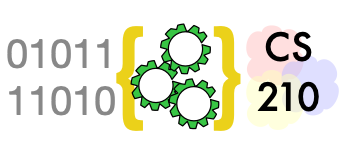A Course in Computational Thinking#
Introduction to Computer Science is a foundational course in computer science. It is a course in programming, but more than that, it is a course in computational thinking.
What’s so special about computational thinking and problem solving? Is it a branch of engineering, or math, or is it a science? Computing certainly draws from all of those fields, and also contributes to them, but in some ways it is unique.
Computing and computer science do not seek to characterize the natural world, although many computer programs (e.g., environmental models, computer aided design and numerical control) incorporate models of the natural world. Computing is increasingly a core tool used in the natural sciences, and computational thinking can be useful to scientists, but core concerns of the natural sciences and computing are distinct.
Some areas of computing (particularly usability and user interface design, and software engineering) draw heavily from the social sciences, especially psychology but also fields as diverse as anthropology, linguistics, and economics. Despite some overlap, though (e.g., economic game theory in the design of computer network protocols, visual attention in user interface design), the core concerns of computing are mostly distinct from the core concerns of the social sciences.
Like mathematics, computing requires rigorous reasoning about formal, abstract systems. Some areas of computer science produce mathematical proofs, as you will be required to do if you continue with computer science through courses in data structures and algorithms. However, computer scientists are more concerned than mathematicians with the things their formal systems represent.
Like engineers, computer scientists and software developers construct abstract representations of things to reason effectively about them. There is an important difference in the kinds of thing that computing produces, relative to conventional engineering. The design of a bridge or an automobile is complex and expensive, but the main expense of building a bridge is in the physical construction, and not the design. The cost of building cars at industrial scale is likewise much larger than the cost of designing a car.
The things designed (but not constructed) by software developers are computations. The computations are constructed by computers, following our designs. Computations are weightless and cheap. The designs of those computations, which we call programs or software or perhaps software systems, are complex and expensive. Any part of the construction that can be fully automated becomes cheap, but there always remains some part of the design that is necessarily human, complex, and demanding. Computing exposes the expense of design by removing the limits of engineering physical things.
All these things that computing is not may shed some light on what computing and computer science are. Computer science is concerned with design of computations, and like other design disciplines it requires creative problem-solving. It requires forming and using abstract, often mathematical models, without losing track of their relation to concrete artifacts. It especially requires careful control of complexity, decomposing problems into smaller sub-problems and organizing them to maintain intellectual control. Many disciplines incorporate these concerns to some extent, but they are the very core of computing.
In tackling a core, rigorous course in computing, you should certainly become a better programmer. But if skill in programming is the only thing you gain from this course, then we have failed. If you as a learner and we as your teachers are successful, a rigorous course in computational thinking will make you a better and more creative problem solver.
Learning to Program#
The principles and techniques you will learn in Introduction to Computer Science are not limited to a single programming language, let alone a particular computer or operating system. But we have to start somewhere. That somewhere requires us to choose a programming language, and to practice using it.
Why Python#
In this course we will use Python, specifically Python version 3.10 or higher. Python is widely used in data science and scientific computing, in cartography, in web development, in machine learning, and in many other domains, but that is not why we have chosen it. We have chosen Python 3 because we believe it is a good language for learning to program. Python 3 is
Consistent. There are few “special cases” to remember in Python, which makes it easier to remember how things work and to build on what you know.
Concise. Python does not require a lot of boilerplate, which makes it easier to read example code.
Well-provisioned. Although there are many extras that you could add, a standard and straightforward installation of Python is enough to build many interesting projects.
That is not to say that Python is a perfect language. It is certainly not the only programming language you will ever want or need to learn. But among the programming langauges available to us today, we believe it is an excellent starting point.
Getting a Start#
The pre-requisites for Introduction to Computer Science include a basic familiarity with programming. That familiarity may take many forms (not necessarily programming in Python). Also, student knowledge from a course some time ago or from self study may be rusty or incomplete.
If you have not programmed at all, but want to tackle this very demanding course, we can recommend the Computer Science Circles online lessons as a good and thorough introduction. Even if you have programmed in Python before, you may find the CS Circles materials valuable as a refresher.
The remaining sections of this chapter provide brief instructions for installing Python 3 on the computer you will use for your projects, and then just enough introduction to Python programming to tackle an initial project.

